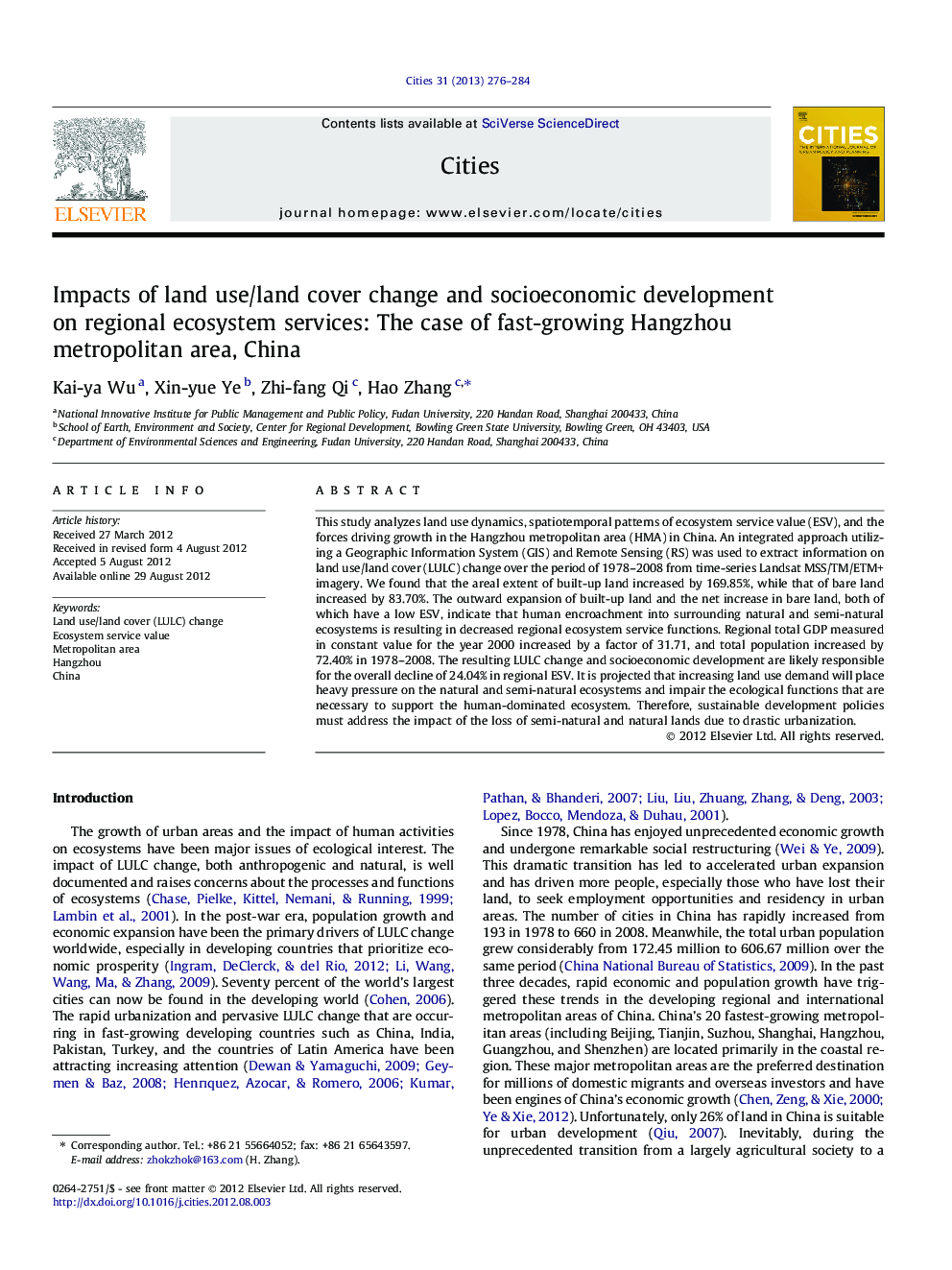| Article ID | Journal | Published Year | Pages | File Type |
|---|---|---|---|---|
| 1008523 | Cities | 2013 | 9 Pages |
This study analyzes land use dynamics, spatiotemporal patterns of ecosystem service value (ESV), and the forces driving growth in the Hangzhou metropolitan area (HMA) in China. An integrated approach utilizing a Geographic Information System (GIS) and Remote Sensing (RS) was used to extract information on land use/land cover (LULC) change over the period of 1978–2008 from time-series Landsat MSS/TM/ETM+ imagery. We found that the areal extent of built-up land increased by 169.85%, while that of bare land increased by 83.70%. The outward expansion of built-up land and the net increase in bare land, both of which have a low ESV, indicate that human encroachment into surrounding natural and semi-natural ecosystems is resulting in decreased regional ecosystem service functions. Regional total GDP measured in constant value for the year 2000 increased by a factor of 31.71, and total population increased by 72.40% in 1978–2008. The resulting LULC change and socioeconomic development are likely responsible for the overall decline of 24.04% in regional ESV. It is projected that increasing land use demand will place heavy pressure on the natural and semi-natural ecosystems and impair the ecological functions that are necessary to support the human-dominated ecosystem. Therefore, sustainable development policies must address the impact of the loss of semi-natural and natural lands due to drastic urbanization.
► Based on multi-temporal imagery, ecosystem services value (ESV) in the study area was calculated. ► Spatiotemporal patterns of ESV in the study area were revealed. ► Relationships between LULC, ESV, and underlying socioeconomic drivers were analyzed. ► We found an overall decline of ESV under the pressure of rapid urbanization and population growth.
